Shiny temples, quiet parks, interactive museums, sprawling markets, posh malls, exotic street food, amazing local coffee, crazy rides, river cruises, vibrant nightlife. To say that Bangkok has everything is justified. And on my second day in the City of Life (one of Bangkok’s many nicknames, which also includes City of Angels and Big Mango), I got to see the many faces of Bangkok: pious, serene, bustling, wild, and stunningly beautiful. Conflicting adjectives, I know, but that’s Bangkok for you.
This day couldn’t be more varied and packed. It started with a stroll around Lumphini Park in Silom, followed by breakfast at Heritage Bistro French Bakery. At around 10AM, which in hindsight was a little late, I took the BTS Skytrain from Silom station to Saphan Taksin station. A two-minute walk from the train station is Sathorn Pier, the central station of the Chao Phraya Express Boat. This was where my Rattanakosin escapade began.
Rattanakosin is the historic center of Bangkok and a trip to Bangkok is incomplete without a visit to some of Rattanakosin’s prime sites, particularly the temples or wats. Wats are not only commanding, beautiful works of architecture, but are also very much entrenched in Thai culture and everyday living. Some of the most important wats in Thailand are found in Rattanakosin. And perhaps the most efficient mode of transportation for a Rattanakosin tour is the express boat.
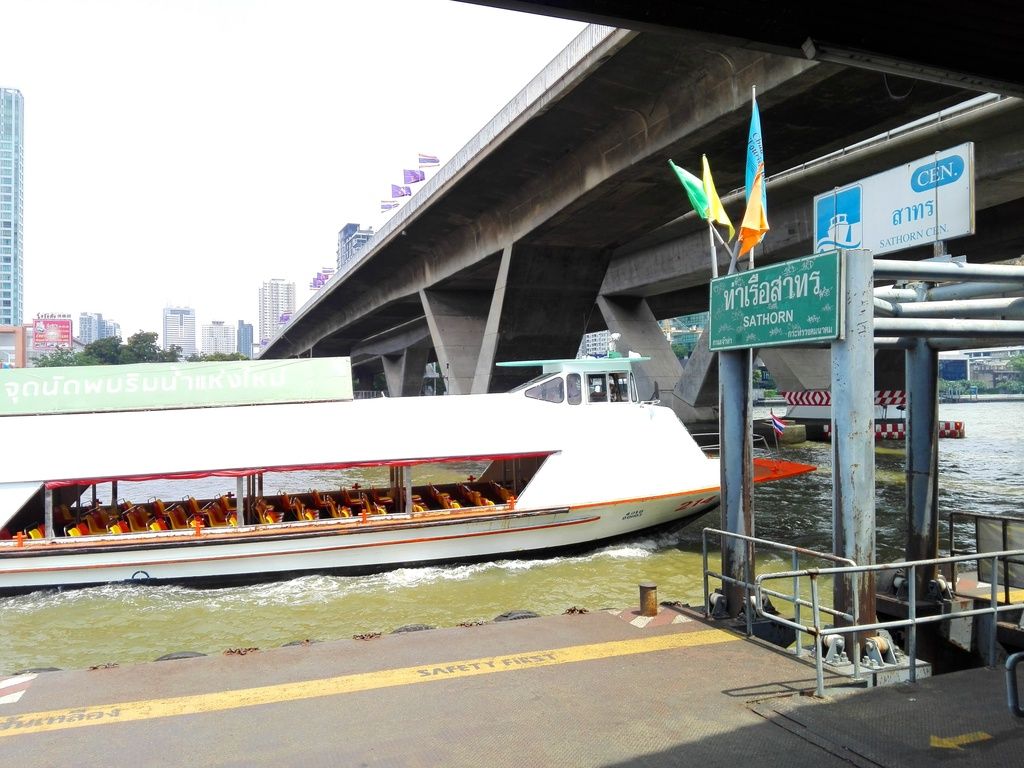
The Chao Phraya Express Boat
Established in September 1971, the Chao Phraya Express Boat is Bangkok’s biggest public water transportation provider. The boats have color-coded flags which represent different routes.
The Chao Phraya Tourist Boat (blue flag) services nine piers and gives access to Bangkok’s most famous tourist attractions. The journey starts from the Sathorn Pier and proceeds up the river, stopping at eight different piers before returning to Sathorn Pier on the same route. With a one-day pass worth THB150, you get unlimited rides on the tourist boat or on any other Chao Phraya Express Boat using the same route from 9:30AM to 7:30PM.

The Tourist Boat is targeted to people who don’t want the hassle of purchasing multiple boat tickets in a day and possibly getting lost. Along with the ticket is a pamphlet containing information on attractions along the river. There is also a tour guide’s recording being played on board. And if you have the energy, you can see all the major tourist destinations near the river by hopping on and off the tourist boat. That was my plan but thanks to Bangkok’s heat and my late start, I could only take on the area around Grand Palace and then Khao San Road at night.
If you ask me, I wouldn’t recommend hopping on the tourist boat, unless you plan to spend only an hour per attraction which is just ridiculous. Counting the time you have to spend walking from the pier to the destination, the time you spend on the actual destination, and then the walk back to the pier, you probably can squeeze three, four at best, attractions in a day. If you take a regular express boat instead of the tourist boat, you would only spend less than THB100. My advice: do your research, plan your route, and get up early to make the most of your day.
Dubbed “River of Kings,” the Chao Phraya River is 372 kilometers long and flows through Bangkok and then into the Gulf of Thailand. The nine piers serviced by the tourist boat are Sathorn (Central), Oriental, Si Phraya, Ratchawongse, Pak Khlong Talat, Tha Tien, Maharaj, Wang Lang (Siriraj), and Phra Athit.

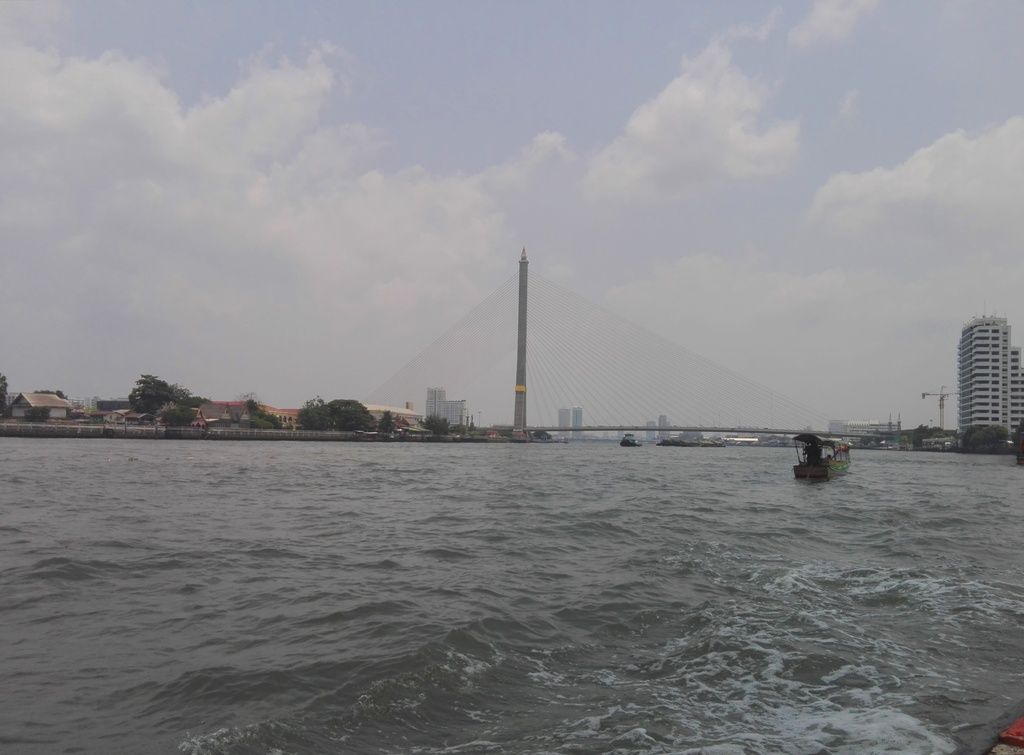
To get a glimpse of each stop and the attractions along the river, I rode from Sathorn to Phra Athit and stayed until the boat turned around and headed for Sathorn again. On the way back, I took off from Maharaj Pier to see the Grand Palace, Wat Phra Kaew and Wat Pho.
The Grand Palace and Wat Phra Kaew
Without a doubt Bangkok’s most popular tourist attraction, the Grand Palace is the former residence of the King. Entry is a steep THB500 for foreigners (free for locals) but this includes admission to the Dusit Palace (valid for seven days) in the Dusit district. If you get to see all the temples and palaces, and even visit the Dusit Palace on another day, and manage to get out still feeling like a decent human being, then I declare the fee worth it. Unfortunately, that was not the case for me. Halfway through the tourist line, I wanted to go back outside because it was very crowded and hot. Everywhere I looked there’s a horde of Chinese or Korean tourist chattering loudly. Which was really not a problem but it made me felt so alone. Alone in a sea of people. How ironic and sad was that? But a Bangkok trip without seeing the Grand Palace sounds like a waste, you know? So I went in.
Visitors are corralled along a set route but once you’re inside you can pretty much explore on your own. The first building you’ll see is Wat Phra Kaew, which is also the most sacred temple in Thailand. It houses the Emerald Buddha, Thailand’s most revered religious icon. I didn’t bother going inside because people (Buddhists, I assumed) were lining up, with offerings of flowers and incense. It didn’t feel right for me to go inside just out of curiosity.
The palace grounds are so large that you have to spend at least a full morning walking through the compound. Prepare your eyes for the glare of shiny, golden towers and sparkly porcelain palace roofs. I kid you not, I was squinting in most of my photos because of the sun’s glare on the towers. I am used to walking during travels but here, every ten minutes or so I would stop to rest and drink water.
Dress code is strict. No sleeveless shirts, shorts or miniskirts or flip-flops. Appropriate clothes are available for rent. I was in a V-neck shirt, jeans, and sneakers so I had no trouble entering but just to be sure I also brought a sarong, which came in handy under the sun’s frying heat. I also applied sunscreen on my arms prior to the tour. Apparently that wasn’t enough. I forgot to put some on my neck and since I was in a V-neck shirt, I suffered a painful and itchy V-shape sunburn which I saw only a few hours later. Clearly, this was not going the way I planned. Haha
The Grand Palace is open every day from 8:30AM to 3:30PM. Free tours in English are available at 10AM, 10:30AM, 1:30PM, and 2PM.
Wat Pho and the Reclining Buddha
Located next to the Grand Palace, Wat Pho is one of the oldest and largest temples in Bangkok. It’s also one of the most significant because it houses the 46-meter-long Reclining Buddha, probably the largest reclining Buddha statue in the world. This statue shows the passing of the Buddha into nirvana, the final state of enlightenment before his death.

Gold plated, 46 meters long, 15 meters high, with inlaid mother-of-pearl soles, the Reclining Buddha is nothing short of impressive. Even a non-Buddhist like me couldn’t help but be in awe of this enormous work of art. I tried to imagine just how many people were involved in creating this. It probably took a lot of time, artistry, and faith to create something this big and regal.
All around the complex, there are many other images and statues of Buddha, mostly in gold. Porcelain towers, big and small, are scattered around the grounds and this time, I had the patience and the sanity to fully appreciate them. Besides the crowd in the temple of the Reclining Buddha, there are fewer tourists here than in the Grand Palace – the reason why I loved this place so much more. There are benches where one could sit in silence and you can definitely capture better photos here.


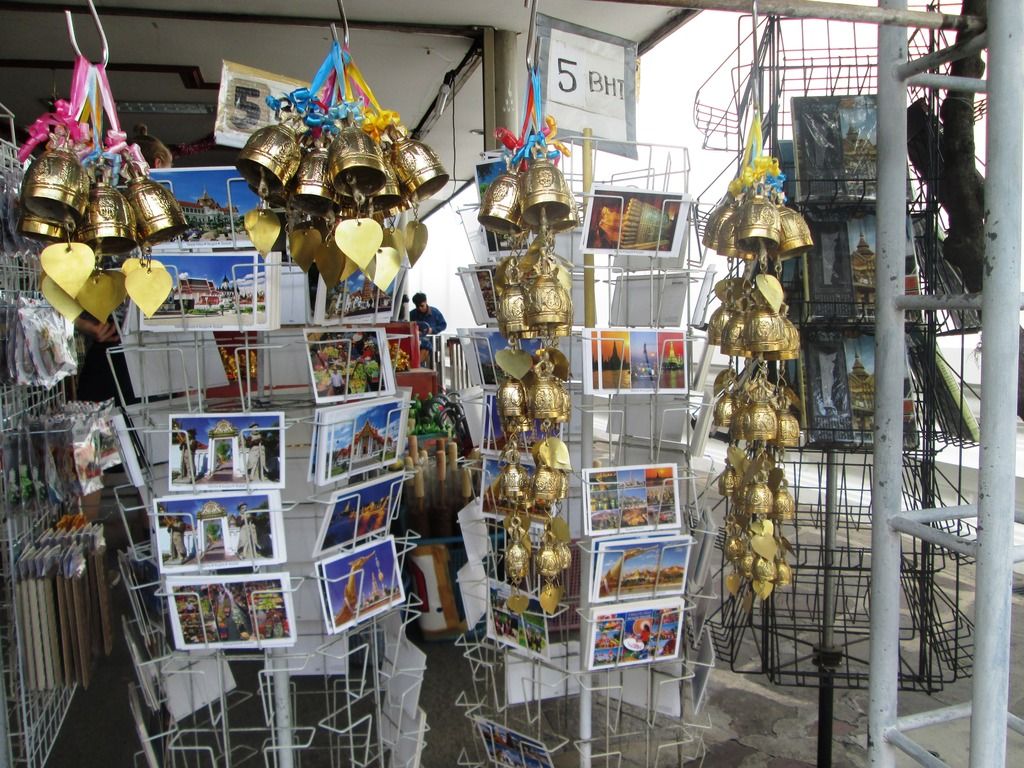
Wat Pho has also traditionally been a place of education, especially for Thai medicine and massage. Visitors can enjoy a Thai traditional massage (nuat Thai) at the school located in the ground.
Same clothing rules apply. Entrance fee is THB50 and during my visit, I was also given a free water bottle. Open daily from 6AM to 5PM.
In the next part of this Rattanakosin series, I’m taking you to one of the best sunsets of my life, a crazy ride, and backpacker’s heaven. Stay tuned! 🙂
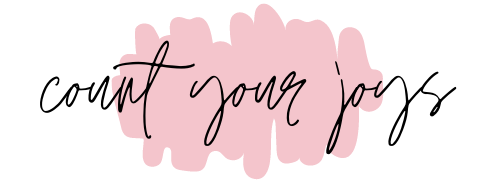









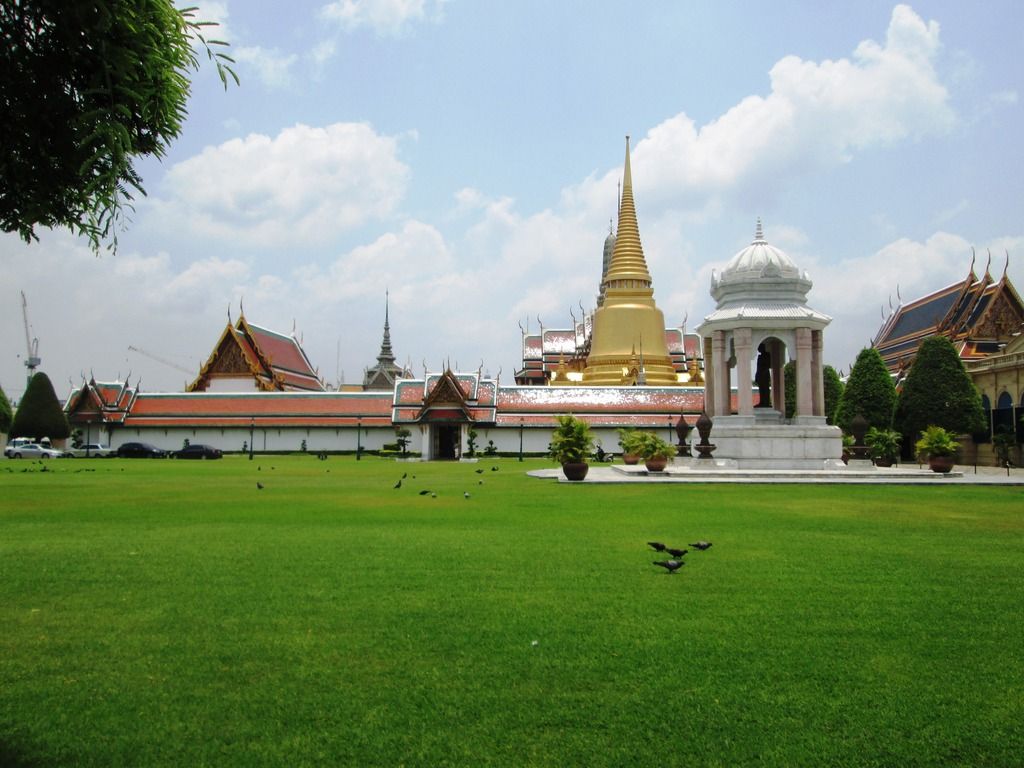














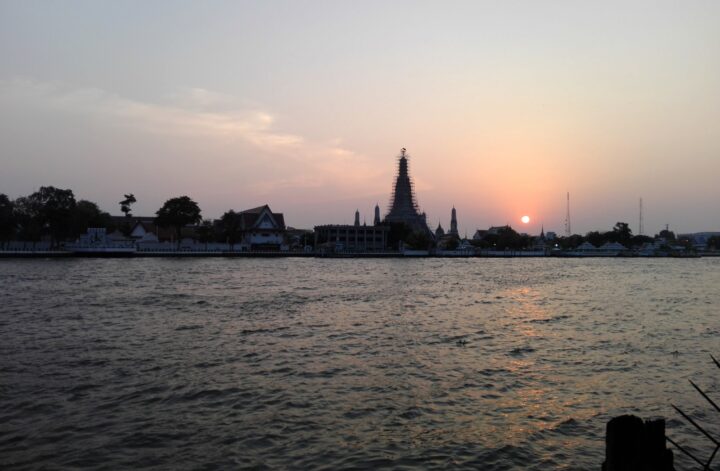

3 Comments